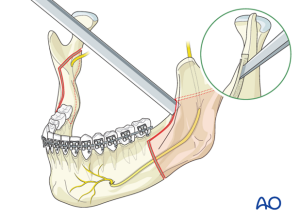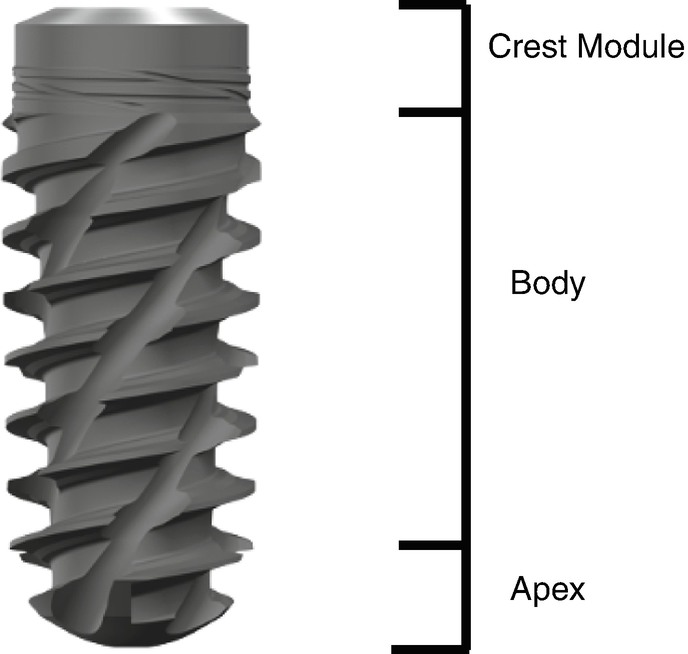Multiple Radiolucencies in Mandible and Maxilla – Associated Disese/Condition and Treatment
Radiolucency or hypodensity:
It indicates greater transparency or “transradiancy” to X-ray photons. Materials that inhibit the passage of electromagnetic radiation are called radiodense or radiopaque, while those that allow radiation to pass more freely are referred to as radiolucent. The term refers to the relatively opaque white appearance of dense materials or substances on radiographic imaging studies, compared with the relatively darker appearance of less dense materials.
Multiple Radiolucencies can be present in Mandible and Maxilla. Thee are different causes of these radiolucencies. Different Diseases and Conditions are associated with Multiple Radiolucencies.
Multiple radiolucencies can be present in:
- Nevoid Basal Cell Carcinoma Syndrome
- Hyperparathyroidism
- Cherubism
- Multiple Myeloma
- Langerhans Cell Histiocytosis
- Cemento-osseous Dysplasia
- Metastatic Tumors to Jaws
Treatments:
1: Nevoid Basal Cell Carcinoma Syndrome:
Most of the anomalies in nevoid basal cell carcinoma syndrome are minor and usually not life threatening.
The prognosis generally depends on the behavior of the skin tumors. In a few cases, aggressive basal cell
carcinomas have caused the death of the patient as a result of tumor invasion of the brain or other vital structures.
Because the development of the basal cell carcinomas seems to be triggered by ultraviolet (UV) light exposure, patients should take appropriate precautions to avoid sunlight. For the same reason, radiation therapy should be avoided if at all possible.
The jaw cysts are treated by enucleation, but in many patients additional cysts will continue to
develop. Varying degrees of jaw deformity may result from the operations for multiple cysts. Infection of the
cysts in patients with this syndrome is also relatively common. Some investigators have suggested that
affected children should have magnetic resonance imaging (MRI) studies every 6 months until 7 years of
age to monitor for the development of medulloblastoma.
Genetic counseling is appropriate for affected individuals.
2: Hyperparathyroidism:
In primary hyperparathyroidism, the hyperplastic parathyroid tissue or the functional tumor must be
removed surgically to reduce PTH levels to normal.
Secondary hyperparathyroidism may evolve to produce signs and symptoms related to renal calculi or
renal osteodystrophy. Restriction of dietary phosphate, use of phosphate-binding agents, and pharmacologic
treatment with an active vitamin D metabolite (e.g., calcitriol) may avert problems.
Exposure to aluminum salts, which inhibit bone mineralization, should be
eliminated also.
Patients who do not respond to medical therapy may require parathyroidectomy. Renal transplantation
may restore the normal physiologic processing of vitamin D, as well as phosphorus and calcium
reabsorption and excretion; however, this does not occur in every case.
Cinacalcet is a recently approved medical treatment for managing the overproduction of parathormone associated with secondary hyperparathyroidism. This medication is a calcimimetic agent that sensitizes the calcium receptors of the parathyroid cells to extracellular calcium, causing the cells to reduce their output of parathormone.
3: Cherubism:
The prognosis in any given case is unpredictable. In most instances the lesions tend to show varying degrees
of remission and involution after puberty . By the fourth decade, the facial features of most patients approach normalcy. In spite of the typical scenario, some patients demonstrate very mild alterations, whereas others reveal grotesque changes that often are very slow to resolve. In occasional patients, the deformity can persist.
The question of whether to treat or simply observe a patient with cherubism is difficult. Excellent results
have been obtained in some cases by early surgical intervention with curettage of the lesions. Conversely,
early surgical intervention sometimes has been followed by rapid regrowth of the lesions and worsening
deformity. A course limited only to observation may result in extreme and sometimes grotesque facial
deformity, with associated psychologic problems and functional deformity that may necessitate extensive
surgery.
Several investigators have suggested the use of calcitonin in severe cases, but such therapy awaits further study. Radiation therapy is contraindicated because of the risk of development of postirradiation sarcoma.
The optimal therapy for cherubism has not been determined.
4: Multiple Myeloma:
The goals of treatment related to multiple myeloma include not only controlling the malignancy but also
making the patient comfortable and prolonging the patient’s survival. Initial attempts to control multiple
myeloma generally consist of chemotherapy. An alkylating agent, such as melphalan or cyclophosphamide,
is often used in conjunction with prednisone, and approximately 60% of patients will respond initially to
this regimen. However, virtually all patients eventually experience relapse of their disease.
More aggressive chemotherapeutic regimens and bone marrow transplantation, either autologous or allogeneic, may be considered in otherwise healthy patients under the age of 55 to 65 years, but these individuals comprise a minority of multiple myeloma patients. Addition of thalidomide to the treatment protocol may improve survival; however, ongoing studies are evaluating the effect of this drug.
Radiation therapy is useful only as palliative treatment for painful bone lesions.
Any one of several bisphosphonate medications (clodronate, pamidronate, or zoledronic acid) can be prescribed to reduce the possibility of myeloma-related fracture with its attendant pain, but these medications do not appear to
increase survival. A small percentage of these patients may experience the complication of bisphosphonate related
osteonecrosis of the jaws.
The prognosis is considered poor, but younger patients tend to fare better than older ones. Pretreatment
serologic studies examining the levels of β2- microglobulin and albumin should be performed. With lower levels of β2-microglobulin (<3.5 mg/L) and higher levels of albumin (>35 g/L), the median survival is approximately 5 years.
In contrast, when serum β2- microglobulin levels are >5.5 mg/L, the 5-year survival rate falls to about 21/2 years. A median survival time of about 3 to 4 years can be expected after the onset of symptoms. In the past, a 10% 5-year survival rate was typical; the prognosis today has improved only slightly. Most hematology and oncology centers report a 5-year Multiple myeloma. This high-power photomicrograph reveals sheets of malignant plasma cells
with eccentric nuclei and stippled nuclear chromatin. Immunohistochemical studies (inset) show a uniform reaction
of the lesional cells for antibodies directed against kappa light chains, indicating a monoclonal neoplastic proliferation. survival rate of 25%. With aggressive chemotherapy and bone marrow transplantation, the 5-year survival rate may be improved to as high as 50%; however, only a small percentage of multiple myeloma patients can
reasonably tolerate this treatment.
This approach seems to hold the most promise for control of this aggressive disease, however, and some centers have
indicated that as many as 20% of their patients may survive for longer than 10 years.
5: Langerhans Cell Histiocytosis:
Accessible bone lesions, such as those in the maxilla and mandible, are usually treated by curettage.
Low doses of radiation may be used for less accessible bone lesions, although the potential for induction of malignancy secondary to this treatment is a concern in younger patients.
Intralesional injection with corticosteroid agents has also been reported to be effective in some patients with localized bone lesions.
Infrequently, the apparent spontaneous regression of localized Langerhans cell histiocytosis has been reported.
The prognosis for bone lesions in the absence of significant visceral involvement is generally good; however, progression or dissemination of the disease may occur, particularly for patients who have three or more bones
affected.
Chronic disseminated disease is often associated with considerable morbidity, but few patients die as a result of the disease. Because of the relative rarity of disseminated cases, the ideal treatment has yet to be identified.
Single-agent chemotherapy using prednisolone, etoposide, vincristine, or cyclosporine has produced
a good response in a significant percentage of such patients, although recurrence is typically seen in over half of the cases.
A combination of vincristine and prednisone seems to reduce this risk of recurrence.
The acute disseminated form of the disease seen in infants and young children may not respond to these
more conservative approaches, and multiple chemotherapeutic agents are given in that situation. Diffuse
involvement with compromise of multiple organs is associated with a poor prognosis and is often fatal. In
general, the prognosis is poorer for patients in whom the first sign of the disease develops at a very young age
and somewhat better for patients who are older at the time of onset.
6: Cemento-osseous Dysplasia:
The various forms of cemento-osseous dysplasia do not appear neoplastic; therefore, they generally do not
require removal. However, these lesions can cause significant clinical problems for some patients.
During the predominantly radiolucent phase, the lesions cause few problems. Once significant sclerosis is present,
the lesions of cemento-osseous dysplasia tend to be hypovascular and prone to necrosis with minimal
provocation.
For the asymptomatic patient, the best management consists of regular recall examinations with prophylaxis and reinforcement of good home hygiene care to control periodontal disease and prevent tooth loss.
Because the onset of symptoms is usually associated with exposure of the sclerotic masses to the oral cavity,
biopsy or elective extraction of teeth should be avoided.
In other instances, symptoms begin after exposure of the sclerotic masses to the oral cavity as a result of
progressive alveolar atrophy under a denture. Affected patients should be encouraged to retain their teeth to
prevent development of symptoms later.
Management of the symptomatic patient is more difficult. At this stage, there is an inflammatory component
to the disease and the process is basically a chronic osteomyelitis involving dysplastic bone and
cementum. Antibiotics may be indicated but often are not effective. Sequestration of the sclerotic cementumlike
masses occurs slowly and is followed by healing. Saucerization of dead bone may speed healing.
Although a single case of a malignant fibrous histiocytoma arising within a focus of florid cemento-osseous
dysplasia has been reported, such neoplastic transformation appears unique, and the prognosis for patients
with cemento-osseous dysplasia is good.
When simple bone cysts arise within foci of cemento-osseous dysplasia, surgical exploration is necessary to establish the diagnosis. These simple bone cysts often do not heal as rapidly as those noted in a younger patient who does not have cementoosseous dysplasia. In some cases the cysts persist or enlarge after surgical intervention; when they fi ll in, the bone retains an abnormal radiographic appearance.
To assist healing, the cyst and the surrounding fibro-osseous proliferation are usually curetted thoroughly.
7: Metastatic Tumors to Jaws:
The prognosis for metastatic carcinoma of the jaws is poor because, by definition, osseous metastasis
automatically places the patient in stage IV disease.
Although a solitary metastatic focus may be treated by excision or radiation therapy, jaw involvement almost
always is associated with widely disseminated disease.
Five-year survival after detection of metastatic carcinoma involving the jaws is exceedingly rare, and most
patients do not survive more than 1 year.
References:
- Oral and Maxillofacial Pathology, 4th Edition, Authors: Brad Neville Douglas D. Damm Carl Allen Angela Chi
- Wikipedia

